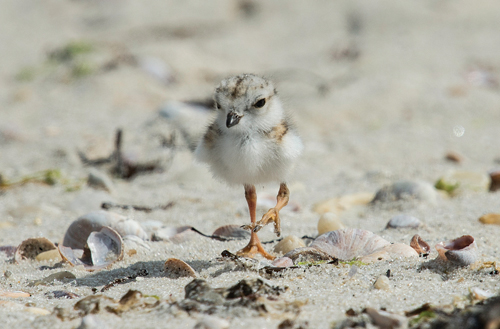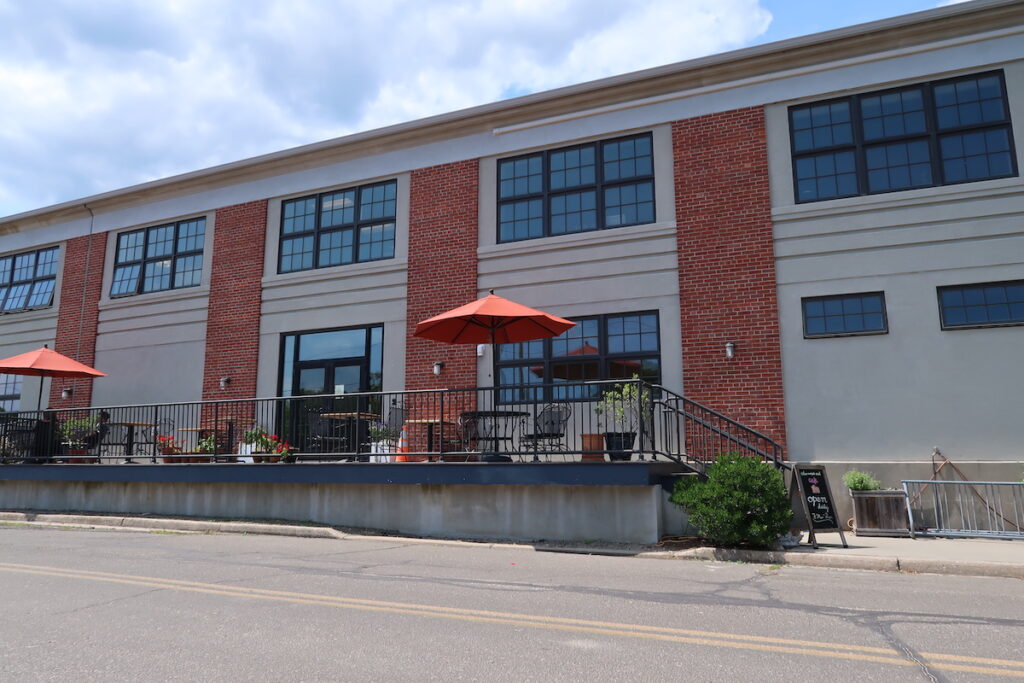Cedar Beach in Southold to become ‘living shoreline’

Along coastlines around the globe, including here on the North Fork, climate change poses the threat of sea level rise. For decades, “shoreline hardening,” by adding manmade seawalls and bulkheads has been looked to as preventative measures for erosion and flooding during storms.
Now, experts say there’s a better way that could even reverse effects on the coastline and improve water quality.
The Town of Southold has teamed up with Suffolk County, Cornell Cooperative Extension and Peconic Estuary Program to establish a “Living Shoreline” at CCE’s location at Cedar Beach in Southold.
The project will see a combination of native plants, sea grasses, natural materials like rocks and wood, and ribbed mussels planted at the facility as part of an ongoing effort to stabilize the waterfront, according to CCE’s Marine Program Director Chris Pickerell.
“The theory is that these more diverse and complex structures better mimic nature and are more resilient to environmental change” than traditional shore hardening methods, Mr. Pickerell said.
At a Southold Town Board meeting Tuesday, town officials approved a contract with Cornell Cooperative Extension for the Living Shoreline Demonstration Project. It’s expected to cost $117,600, with half funded by a CCE donation. The remaining $58,800 was received through grant funding from Suffolk County’s Water Quality Protection and Restoration program.
This fall, several versions of living shorelines will be installed at the Southold facility. With different mixes of plants and animals, researchers hope to mimic conditions in different parts of Southold Town to gather useful information for future shoreline projects. With Peconic Estuary Program as a partner, Mr. Pickerell said the projects scope has increased, bringing an “added level of scientific vigor, especially with regard to the mussel culture and handling.”
Southold Town Supervisor Scott Russell said he is glad to partner with CCE. “The living shoreline is an important component in developing strategies to restore our coastal resources,” he said Tuesday night. “This demonstration will identify the most efficient and effective way to establish native plants and establish healthy mussel beds in an effort to educate others.”
The key player in this project will be ribbed mussels, which CCE is already at work spawning to seed the shoreline. The non-edible mussel species help stabilize marshlands, growing at the base to hold marsh grasses together. “As an added benefit, this species also filters the water very effectively in a similar way to oysters and clams, the more well-known cousins who receive much more attention because they are edible,” Mr. Pickerell said.
Dr. Joyce Novak, who recently took over as director for the Peconic Estuary Program, hopes to set up a monitoring research program at the site to examine the impacts. “We instinctively might think that they’re doing well, but I think we really need to be able to quantify water quality successes and failures, so we can target where they’ll have the most impact,” she said.
She has firsthand experience at “green infrastructure,” after working with the New York City Department of Environmental Protection’s Blue Belt program, where she worked on designing wetlands for stormwater management. “Instead of just building out pipes, it’s building out natural systems to capture stormwater and filter out pollutants,” she said, with several positive outcomes. “It’s more cost effective and enhances the habitat and wildlife in any area. In the city, a lot of them became public-use areas as well.”
With success raising a small batch of ribbed mussels for the initial shoreline project, CCE aims to develop a reliable enough method to eventually scale up the ribbed mussel spawning operation at Cedar Beach.
Waterfront homeowners in Southold will also be encouraged to view the site to garner ideas about managing, enhancing and protecting their own waterfront properties.
“We face problems every day with rising sea levels and continually harsh winter storms,” said Southold Town Trustee Nick Krupski. “When the work is completed, we hope to be able to send [homeowners] down to the site to view appropriate options to use on their properties when faced with erosion on their waterfront homes,” Mr. Krupski said.
Work is set to begin this fall, officials said, once site plans and DEC permits are finalized.
Photo caption: A newly hatched piping plover photographed on Cedar Beach in Southold. (Credit: Tom Reichert)









